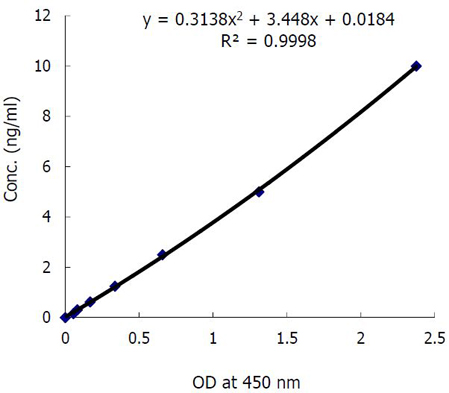ELISA Assay. Detects human ANGPTL3. Does not cross-react with mouse ANGPTL3, human ANGPTL4, human ANGPTL6, human ANGPTL7 or human ANGPTL2. Colorimetric assay. Sample Types: Cell Culture Supernatant, Plasma, Serum. Range: 0.156 to 10ng/ml. Sensitivity: 75pg/ml. Seven proteins containing an N-terminal coiled-coil domain and a C-terminal fibrinogen-like domain, both characteristics of angiopoietins, have been identified and therefore designated angiopoietin-like proteins 1-7 (ANGPTL 1-7). ANGPTL3 and ANGPTL6 (Angiopoietin-related growth factor; AGF), among others, function to regulate angiogenesis and also appear to directly regulate lipid, glucose, and energy metabolism. ANGPTL3 plasma levels are increased in a mouse model of diabetes mellitus. - Seven proteins containing an N-terminal coiled-coil domain and a C-terminal fibrinogen-like domain, both characteristics of angiopoietins, have been identified and therefore designated angiopoietin-like proteins 1-7 (ANGPTL 1-7). ANGPTL3 and ANGPTL6 (Angiopoietin-related growth factor; AGF), among others, function to regulate angiogenesis and also appear to directly regulate lipid, glucose, and energy metabolism. ANGPTL3 plasma levels are increased in a mouse model of diabetes mellitus.

